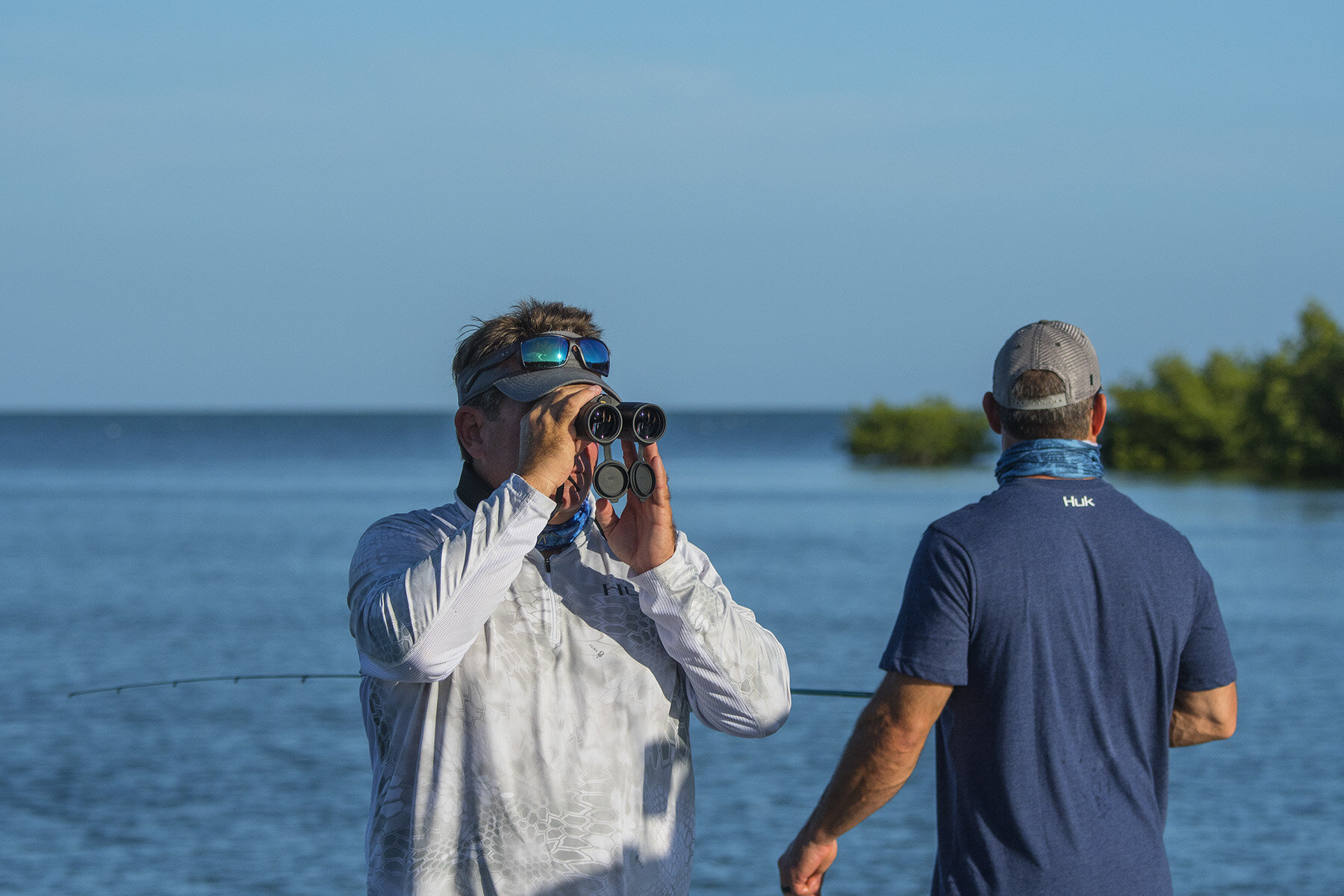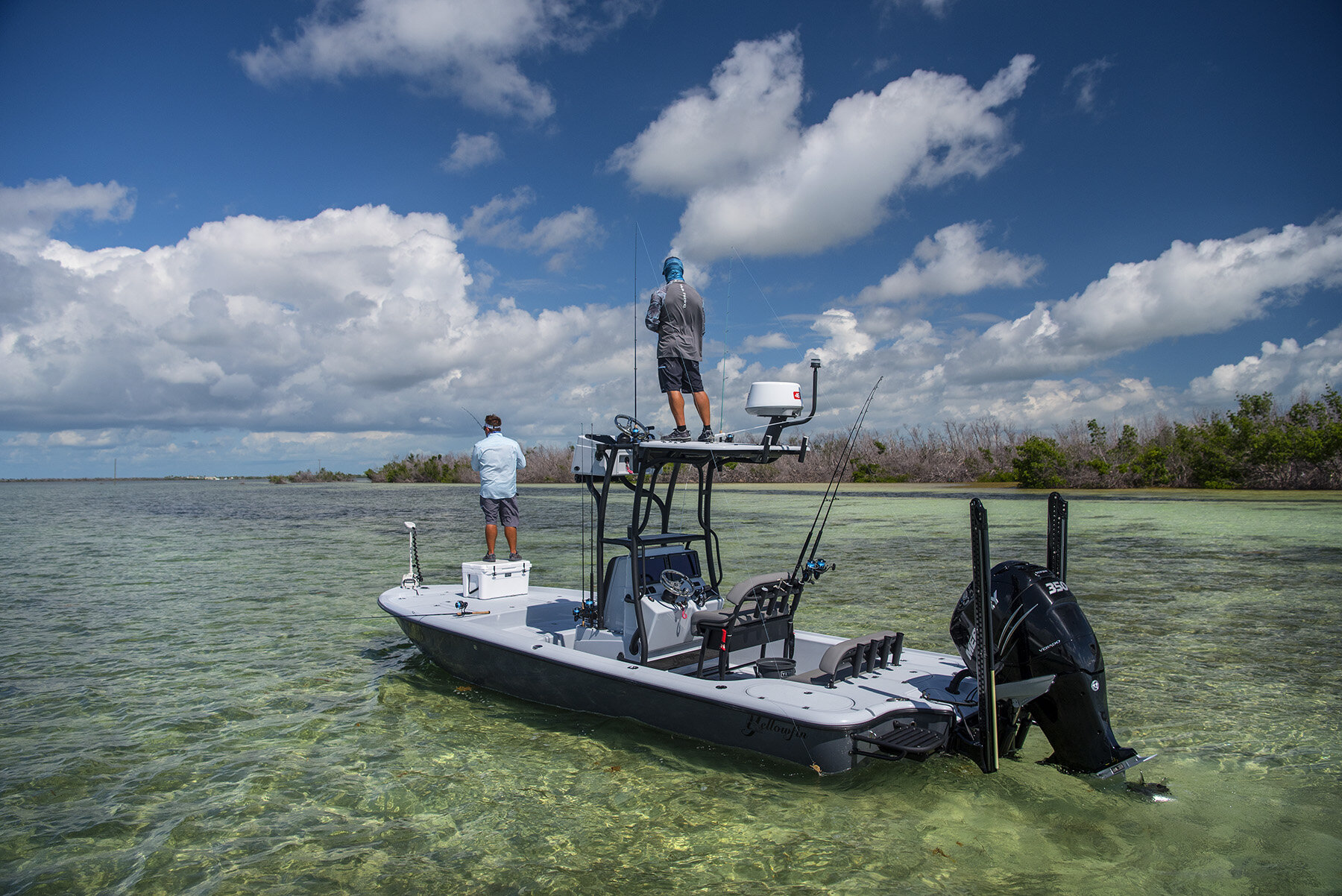3 Change-up Tips When Tarpon Aren’t Biting
written by james knicely
Even the best fishermen have days when it feels like you're on the outside of an inside joke, with all the fish laughing back at you. That's how Tom Rowland and Rich Tudor felt in their latest episode of Saltwater Experience as they hit the water in the Lower Florida Keys, hoping to reel in some beautiful baby Tarpon during a feeding frenzy. Now anyone who has been fishing even once, knows the struggle of a slow day with nothing but your lure and your waning anticipation in sight. Even the most experienced fisherman can get discouraged when early day excitement and gives way to a slow morning with no bites. Tom and Rich’s success, however, prove that persistence and experience can break the mold and hook those famous silver kings. Here are 3 key tactics they employed, to get baby tarpon on the line, that you can use on your next trip down to the keys.
@SE Multimedia 2019
“THE SECRET TO CHECKING A WHOLE BUNCH OF SPOTS REALLY FAST, IS THE BINOCULARS.”
Read the Water
The first thing they did after hitting the water was pull out their Nikon binoculars to start scanning the water lines. If you are after tarpon, then you already know they are famous for coming to the surface for gulps of air. This means that you can physically spot fish activity in the water so you know exactly where you drop your lines, without having to drive to every spot in the bay. However for a large fish sometimes Tarpon can gulp air with very little disturbance to the surface. Having the binoculars was they key for them to make sure they saw fish, and if you are not seeing the activity, then keep moving. It can be tempting to try a few casts at every location you scout, but Tom and Rich struck out 6 times in a row and kept moving without pause. Even though they had a specific window between tides, they knew, it’s better to take your time to find the right location than it is to waste your time at the wrong one.
“All the action was happening was where that grass had decayed and the water was dirty”
2. Know The Conditions
Of course, it is much easier to race against the tide when you have a brand new Mercury Verado on the back of your rig, zipping you across the water. As they hummed from one spot to another, scanning with the surface activity was not the only indicator they were looking for. It is important to know the specific conditions that can lead to feeding frenzies. Sections of dead and decaying grass that create low oxygen conditions in the water are prime feeding grounds for baby tarpon. With their ability to gulp in the air at the surface, tarpon are at an advantage in these waters because they can operate at full speed. Shrimp, on the other hand (a favorite food of baby tarpon), are not so lucky; they are also forced closer to the surface due to the low oxygen, but they are not able to move at full capacity. This makes them easy prey for the tarpon and thus create prime conditions for feeding. It was in one of these sections of decaying grass that Tom and Rich came across a huge swath of tarpon activity.
“I think that means that you’re supposed to be retrieving it slower”
3. Take It Slow
Tarpon are beloved and respected by fishermen across the world for their speed and strength in the water (and on the other end of a line), so when Tom and Rich were casting they were reeling in at a steady pace because they knew the tarpon have no trouble making hits at speed. However, “the fishing was on, but [they] weren't getting bites,” and given the conditions we just discussed, the food the tarpon were after was inherently struggling due to the lack of oxygen in the water. “We started to realize, man, we have to move things slow,” because that was what the shrimp in the water were doing. When they did, the bites started coming. If you’re on the water, and you’re on the fish, but you aren’t getting any hits, try slowing your reel pace way down. Let your lure sink just below the surface out of sight and allow it to more closely mimic a sluggish shrimp struggling for oxygen in the decay. Tune in to the 16:00 & 19:55 minute marks to hear more about two funny and eye opening moments for Rich, that made him realize he needed to slow it way down.
“WE ACTUALLY STARTED THINKING WITH OUR HEAD, NOT IN OUR HEART.”
Tom and Rich spent the first half of the day feeling like they were banging their heads against the wall, with no bites to show for it, but they came prepared with the right tools and experience. It took a combination of patience, speed, and precision, but ultimately they were able to use their knowledge to make the adjustments they needed to reel in some beautiful fish. Check out S14:E14 below to get a look at the astounding “Lower Keys Tarpon” they reeled in.


















